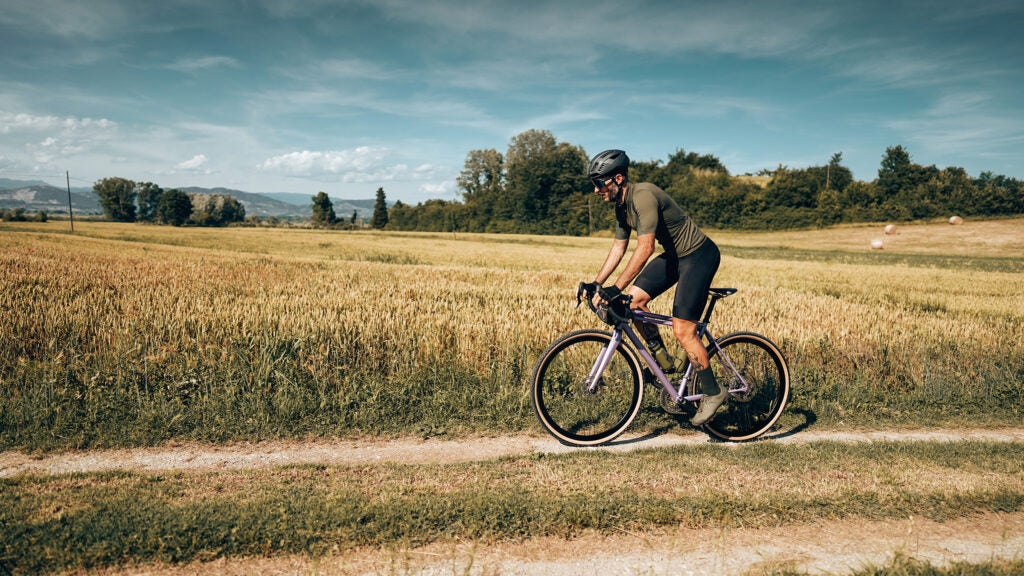No products in the cart.
Outdoor Adventure
The Very Best Gravel Bikes Available Now (2024)
Gravel bikes have changed considerably over the past couple decades. While some modern gravel bikes are essentially road bikes with more tire clearance, others are optimized for bikepacking with lots of gear. Because there are so many options, finding the right gravel bike can be a challenge. So we put in hundreds of miles of testing to bring you the top tier of gravel bikes available right now. Our list below is the result of testing bikes from the most popular bike brands down to the small builders.
At a Glance
All the bikes in this guide were tested by multiple reviewers. When you buy through our links, we may earn an affiliate commission. This supports our mission to get more people active and outside. Learn more.
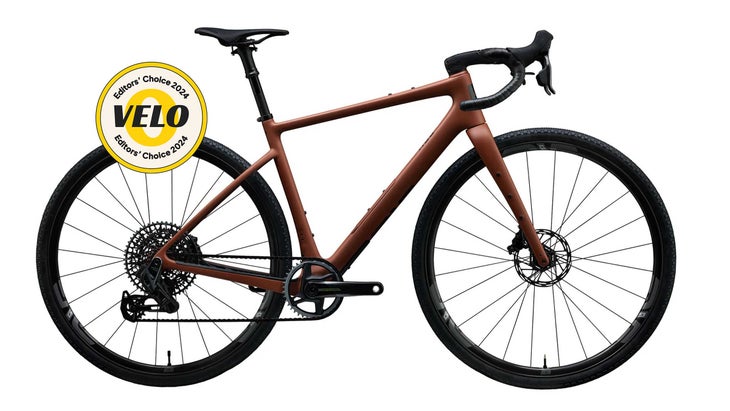
Editor’s Choice
Enve Mog
$5,500 at Enve $4,450 at Backcountry (Frame only)
Build: The Mog includes the Chassis (which consists of a frame, fork, seatpost, handlebar, and stem)
Frame Weight: 950 grams (Minus the hardware in a painted size 56)
Pros and Cons
⊕ Extremely well-balanced handling
⊗ Very premium price
Enve Composites is no stranger to what makes a good bike, having shown its expertise in making lust-worthy carbon wheels, handlebars, and accessories since 2007. For its first entry in cycling’s hottest category, the Ogden, Utah-based company knew it had to make a bike with its own unique vision. It had to be different in an increasingly crowded market, and that’s exactly what the Enve Mog gravel bike is.
The Mog feels like the complete package. It can handle a maximum of 700c x 50-millimeter tires, whereas 45-47 millimeters is the maximum for most other brands, and often much less than that. There are mounts all over the place: three on the fork for cargo, three sets of bottle mounts on the frame, and another at the top tube, too. Further, two roll bags fit in the downtube, plenty for a repair kit, some snacks, or even an emergency wind jacket.
Enve has done the hard work of ensuring every size receives similar handling characteristics, which is uncommon on most gravel bikes. Somewhere in the middle of road-centric handling and more laid back, the result is a bike that makes you far more confident and comfortable than you should be on washed-out descents. At the same time, testers were still able to keep up with the fast group at a local gravel race.
Of course, all of this comes at a price, one that is unabashedly premium. But for how well-rounded the bike feels everywhere, as well as the polish shown in its build specs, Enve is partly justified.
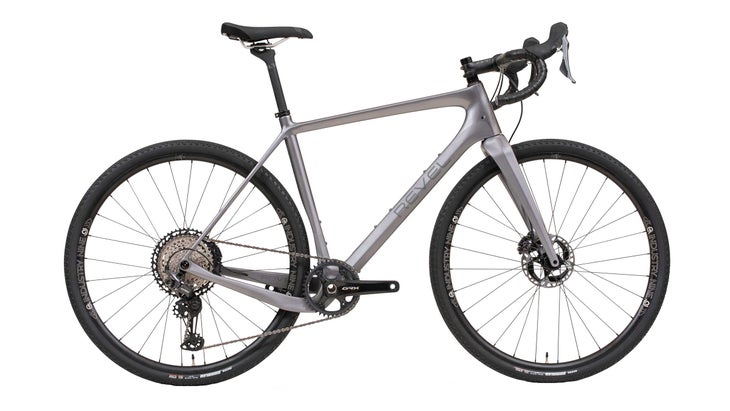
Smoothest Ride
Revel Rover
Build: GRX
Weight: 18 lbs (S)
Pros and Cons
⊕ Great tire clearance
⊕ Eager handling on dirt
⊗ 1x-only drivetrain compatibility can be limiting
Remember all those folks saying that gravel bikes are just mountain bikes from the 1990’s? They’re probably talking about the Revel Rover gravel bike. Not only does the Carbondale, Colorado-based company find most of its notoriety from its mountain bikes, but its behavior— particularly on single track and double track—reveals that this is far from just your standard sporty gravel bike.
The Rover won’t feel the fastest on pavement, but add a bit of dirt and the Rover starts to come alive. It’s a fantastic climber, particularly on more technical terrain. Acceleration is on the snappy side, and its geometry lets you point and shoot through rock patches rather than having to find a tight line. Above else however, the Rover rides much smoother than the average carbon gravel bike, a testament to its smart frame design.
l considered the details when testing here, too. The guided internal cable and hose routing is a breath of fresh air against complicated fully-internal setups. The threaded bottom bracket is also a nice touch. Space for 700c x 50 millimeter tires abounds despite stubby 420 millimeter chain stays. The bike may lack a bolt-on top tube bag mount, but it makes up for it with up to four frame bottle cage mounts and a SRAM Universal Derailleur Hanger (UDH) that standardizes derailleur hanger replacements.
There is one small caveat with the Rover: until recently, every bike came with a 44-centimeter handlebar, regardless of size. Wider bars mean improved control and leverage according to Revel, but smaller-size riders likely will want to consider swapping for a different-width handlebar. The bars themselves are easy to swap, fortunately, but it is the one caveat to an otherwise phenomenal gravel bike.

Best Technical Climber
Chapter2 Kaha Frameset
Weight: 2.4 lbs (frame), 0.9 lb (fork)
Pros and Cons
⊕ Customizable
⊗ Chapter2 only offers framesets
Chapter2 might not be the first name that comes to mind when you think of high-performance cycling, but the Pryde family—better known for their NeilPryde kite sailing and windsurfing business—knows their way around high-performance carbon components, and the Kaha is an excellent example of that.
This bike loves technical, steep climbing. The short rear end allows riders to keep much of their weight over the rear wheel, ensuring the rear tire has grip even when things get loose on the trail. And when the road or trail points downhill, the Kaha feels manageable, agile, and plenty responsive.
The word Kaha, which means ‘power and strength’ in Maori, covers every base you’d expect for a gravel bike. 700c x 47-millimeter tire clearance, loads of mounts for gear on the frame and fork, useful downtube internal gear storage, and space for 1x and 2x drivetrains means you can build and ride the bike exactly as you want to.
On that note, Chapter2 only offers frame sets—there are no complete bikes are here. According to Chapter2, selling only frame sets and a few select components allows the company to stay hyper-focused on the core of the cycling experience, while allowing the customer to choose the build that best fits their needs.
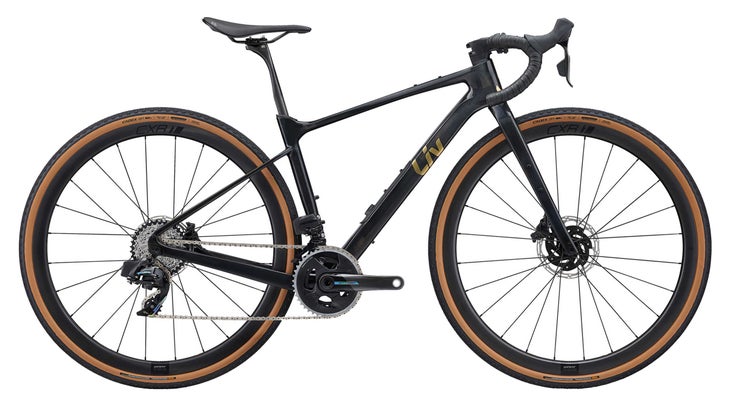
Best Handling at Speed
Liv Devote
Build: Advanced Pro
Weight: 17.5 lbs (XS)
Pros and Cons
⊕ Progressive geometry
⊗ Finicky seat post cluster
The Liv Devote gravel bike range includes the all-new, lightweight Devote Advanced Pro, as well as upgrades to both the Devote Advanced and Devote series, with redesigned geometry across all models. In the three years since the Devote series was launched, gravel riding and racing have evolved, and Liv says this latest generation features updates to reflect the times.
Handling upgrades errs toward additional stability for the Devote series. This was managed with a redesigned geometry that puts the rider in a more aggressive position, increases traction and stability, and allows more control at speeds and on descents.
One important upgrade to the Devote Advanced series is the new integrated down-tube storage. It consists of a latch found just under the downtube water bottle revealing a weather-resistant bag, with space for essentials like an inner tube, a CO2 canister, tire levers, or a multitool. Frame-bag happy riders will be pleased to see a range of frame mounts, including bottle cage mounts, a top tube bag mount, fork mounts, and fender mounts, as well.
From the progressive geometry to the great fit to the excellent proprietary components like the saddle and tires, this is a great bike for a gravel rider who likes to go fast. Testers also found that the Devote offers room to grow for someone who is newer to gravel riding but plans on sticking with it.
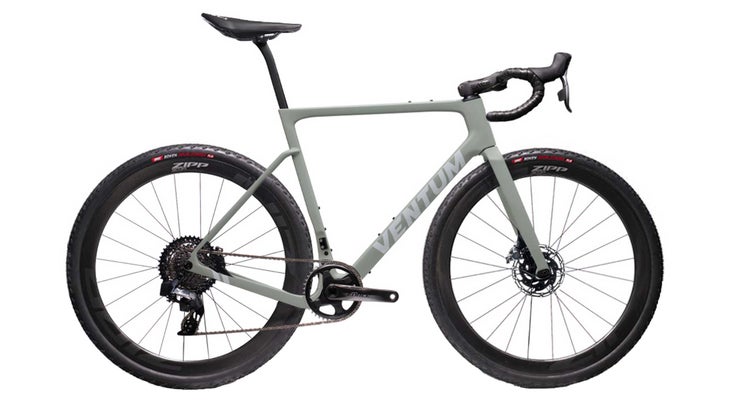
Best Quiver Killer
Ventum GS1
Build: Custom Build with SRAM Red
Weight: 18 lbs (XS)
Pros and Cons
⊕ Extremely stable handling
⊕ Arrives in a ride-ready box
⊗ Very premium price
The Ventum GS1 is an update of the GS1 gravel bike that launched in 2021. When it launched, it was too early for us to test ride in the Rockies, so testing happened on a March trip to Patagonia, Arizona, and later to the Flint Hills gravel roads of Unbound Gravel. On all of those surfaces, the GS1 came pretty darn close to “quiver killer” status: it has the stiffness and snappiness of a performance road bike but also the necessary stability when conditions became sketchy on loose dirt.
This latest iteration of the GS1 adheres to the performance orientation that ties all Ventum bikes together, even on gravel. Like many performance-oriented gravel bikes, it has 420-millimeter chainstays for a nice, snappy feel when accelerating and moving fast, but the extended reach and wheelbase keep those characteristics in check when conditions are unruly. The result is a whole lot of stability when going fast, regardless of whether you’re on the tarmac or something much rougher.
The value of Ventum’s bikes and their direct-to-consumer depends on how you customize it. Everything from the drivetrain, wheels, tires, and even touch points can be customized to ensure you have the right bike from the start. And when the bike arrives to your house, the GS1 is designed to show up in a ride-ready box; you put on the seat post and wheels and the bike is ready to go.
Ventum GS1 framesets start at $2,599, but $2,999 nets you a complete bike with SRAM Apex AXS electronic shifting. There’s no limit to how nice the GS1 can be equipped, however, and the build options go all the way up to $9,900.
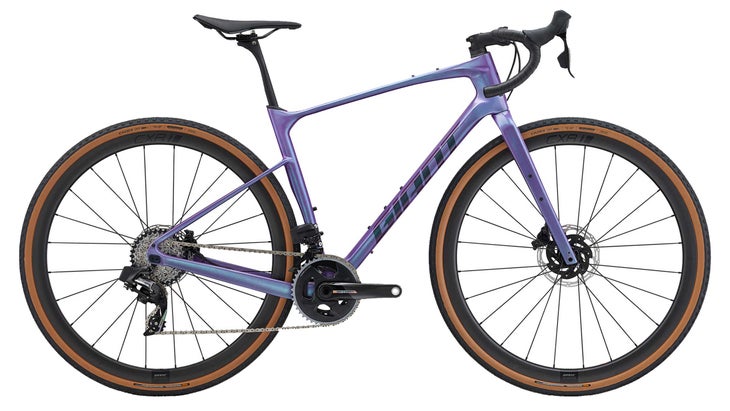
Best Dirt-Focused Ride
Giant Revolt
Build: Advanced Pro 0
Weight: 21.16 lbs (XS)
Pros and Cons
⊕ Suspension makes handling technical dirt a breeze
⊗ Very premium price
Giant really went for it with their Revolt Advanced Pro 0 gravel bike. Their Revolt gravel bike was already quite good for riding gravel roads and being a general all-around drop bar bike. But what if you want a bike that’s far more dirt-focused? One that feels settled on washboard descents and single track that a gravel bike has no business being on? That’s the Revolt Advanced Pro 0, which offers a 40-millimeter suspension fork and a suspension seat post out back.
The idea of adding suspension to a gravel bike isn’t entirely a new one, but Giant has one of the best versions of it. Geometry is adapted to match the added capability that comes with suspension, with high-quality components that match that added capability. Even the tires are wider and knobbier in this version to take advantage of all of that bump-taming suspension. The added suspension here makes those chunky, rutted, and rocky roads that rattle your fillings out considerably smoother. In these situations, the Advanced Pro 0 still feels plenty responsive when you get up and pedal.
The Giant Revolt Advanced Pro 0 is different than the Revolt, which comes in an array of models with aluminum or carbon frames. But regardless of which Revolt you choose, you’ll receive a bike with suspension up front and a dropper post out back, a wide-range 1x drivetrain, and more mounts than you could need.

Best Custom Bike
Scarab Paramo
Build: Paramo frameset (T1 paint scheme)
Weight: 19.9 pounds (~52 cm custom)
Pros and Cons
⊕ Hand-built, custom steel bike
⊗ Very premium price
Velo Tech Editor Alvin Holbrook’s favorite drop bar bike he’s ridden this year is the Scarab Paramo. Scarab isn’t a household name, which is no bad thing. You wouldn’t expect hand-built, custom steel bikes made in the Andes Mountains of Colombia to grow from a tree, would you?
Scarab makes a range of road, gravel, and even mountain bikes. They offer different models, though these are more suggestions for starting points. If you explain your riding style, your preferred riding characteristics, and where you hope to go, Scarab’s reps will take it from there. You can even choose from a wide array of paint themes. Riders can adjust the geometry ot be tailored to your riding preferences, providing that perfect balance of comfort, stiffness, smoothness, and compliance in all the right places. The result is a bike uniquely suited to your needs.
The Paramo we tested is set up for fast gravel rides, with just a three-pack fork mount for when you want to load up your bike for a long trip. I found that it felt plenty quick in the local road group rides. Holbrook went with a design based around their Campesinas scheme and built it with the latest Shimano GRX 12-speed groupset. While they have several themes to base your custom paint upon, Holbrook wanted one that best embraced the fact that the bike hails from Colombia.
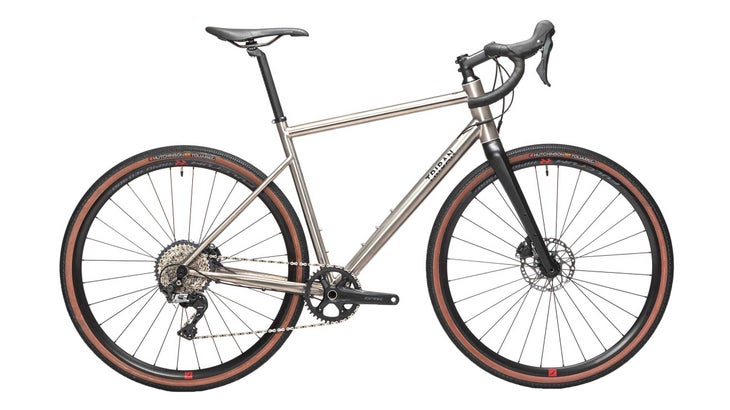
Best Budget Bike for its Quality
Decathlon Triban GRVL
Build: 900 Ti
Weight: 20.8 lbs (M)
Pros and Cons
⊕ Lower price point than most brands
⊗ A few spec sacrifices on the build to keep the price down
French sporting goods company Decathlon isn’t all that well-known in North America. They’re a veritable giant in Europe, however, with all the resources to make bikes that compete with the big brands in the industry. Further, they’re able to do it at a price point lower than most other brands.
The GRVL 900 Ti frame is made in conjunction with legendary Italian bike frame and tubing manufacturer Dedacciai. Titanium frames, though expensive, tend to ride smoother, are more comfortable, and don’t rust like their steel counterparts with the same tubing profiles.
The GRVL 900 Ti isn’t just about the titanium frame however. It’s titanium frame and carbon fork impart a sense of smoothness over chip seal roads and gravel paths, but the handling and feature set is inherently good, too. Plus, the addition of bottle cage mounts on the fork make the bike ready for some light-duty bike packing or all-day gravel rides.
How often do you find a titanium gravel bike under $5,000? Rarely, but we’ve found one here. Decathlon has had to make some spec sacrifices to keep the price point down, but the key bits—the Shimano GRX drivetrain, and the aluminum Fulcrum wheels—ensure the bike still feels good.
There’s just one version of the Triban GRVL 900 Ti, with the aforementioned Shimano drivetrain and Fulcrum wheels. Even still, the in-house branded crankset, handlebars, and seat post are easy to use and seem reliable.
How We Test
- Number of Testers: 5
- Number of Products Tested: 33
- Longest Testing Bike Ride: 280 miles (450 km)
These gravel bikes—ranging from entry-level to top-spec bikes with weights matching high-end road bikes—were chosen to be a well-rounded preview of the best bikes on the market today. Sure, we tested gravel bikes from all of the major bike brands, but we also made sure to test the small brands as well.
Our reviews were performed all over the world by five dedicated testers, with a vast majority of those miles on roads and trails we know best, from Dallas to Patagonia to Arizona. Riding across such varied terrain by riders of different skill levels and needs means we’re well-suited to understanding what parts of a gravel bike can frustrate, what makes a bike good, and what makes a bike truly stand above the competition.
Testing includes riding local loops, big days out, group rides, and everything in between. It means living with them day-to-day, maintaining them, and building them to learn more about their ins and outs.
Meet Our Lead Tester
Alvin Holbrook is a tech editor for Velo. He covers road, gravel, and e-bikes after nearly a decade in the bike industry. In addition, he uses his background in urban planning to cover stories about active transportation, policy, tech, and infrastructure through the Urbanist Update series. He currently lives in San Antonio, Texas with his wife and an ever-growing stable of bikes and kitchen utensils.
How to Choose a Gravel Bike
What Is a Gravel Bike?
A gravel bike is designed first and foremost to be at its best when riding on a variety of surfaces. That doesn’t just mean gravel, but dirt roads and pavement as well. A large percentage of gravel bike riders will take their bikes on singletrack which might be better suited to a mountain bike as well. In short, a gravel bike needs to be a lot of things to a lot of people.
Sure, a gravel bike might look a whole lot like a road bike, as they both have drop bars and relatively compact frames. But a gravel bike will have a gravel tire, typically ranging from 38 millimeters all the way up to 50, with some gravel bikes going even wider than that. Gravel tires vary in tread, though most gravel bikes will have some sort of tread on them in an effort to balance rolling resistance and grip in loose conditions. An increasing number of gravel bikes come with damping or suspension. Most of the time, that comes from an extra flexy seat post or handlebar, but some gravel bikes feature a suspension fork to add traction, grip, and comfort too.
Finding the right gravel bike for you can be a challenge with so many varieties. Here are our tips to ensure you find the right bike.
What Should I Look For on a Gravel Bike?
A gravel bike isn’t just a road bike with wider tires. The geometry is quite a bit different, favoring straight-line stability through the bumpy surfaces of dirt and gravel roads. Rider positioning is going to be more upright as well. The result is a bike that can roll through just about anything you may encounter on a road.
Gravel bikes typically have a number of mounts. Two water bottle cage mounts are certain, with a third at the bottom of the bike nearly guaranteed. Most gravel bikes will have a pair of mounts for a top tube bag to carry snacks on rides. Many will have fender mounts, while other will have rack mounts to carry gear.
Most gravel bikes will feature a shorter stem and wider drop handlebars that flare out. Further, most gravel bikes will come with a 1x drivetrain. A 1x drivetrain has a single chainring up front and a wide-range cassette out back. This ensures riders are quickly able to find the right gear simply by hitting the upshift or downshift levers.
The latest gravel bikes have started to split into two categories: performance gravel bikes and adventure gravel bikes. Performance gravel bikes ditch most of the rack and pack mounts, shed weight, and tend to have quick er handling. Adventure gravel bikes double down on bike packing, with more mounts, wider tires, a more stable ride, and a focus on durability.
What Exactly Do I Need to Budget For?
Most of the bikes we’ve tested qualify as high-end bikes, costing as much as a decent used car. However, the trickle-down effect is very real, and so there are some fantastic gravel bike values at a more affordable price point. Knowing what you can spend will give you a great idea of what’s available to you on the market today.
Buying a gravel bike isn’t just buying a bike—you also need the right accessories. At a minimum, you’ll need a quality set of bike lights and a well-fitting helmet in the name of safety. Further, you’ll need to budget for a decent set of pedals, and matching shoes if you want to use clip-in style pedals rather than a more accessible flat pedal.
The clothes themselves also make a difference. Finding a properly fitting set of bib shorts and a jersey can make your ride that much more comfortable if you decide to wear them. And that’s just the tip of the iceberg: repair kits, maintenance items, and more are worth budgeting for.
How Do I Choose The Right Size of Gravel Bike?
Your typical gravel bike will come in a range of sizes to fit riders of all heights. Most new gravel bikes will come with a size range to help you figure out what size of bike you need. This size range is usually expressed in centimeters, though some brands use a XS to XL.
Once you figure out what size of gravel bike you need (we recommend going to your local bike shop—more on that below), you’ll want to give the bike a test ride. That means standing over the top tube of the bike (sometimes referred to as a crossbar) comfortably with both feet flat on the ground. The top tube can touch you, but it’s better if it doesn’t.
The right size of gravel bike will place your torso and arms at roughly a 90-degree angle from your torso without feeling uncomfortable. Your knees will have a slight bend to them at the bottom of your pedal stroke. Most importantly, the bike will feel comfortable to maneuver around.
Of course, all of this advice is only amplified by going to a trusted bike shop. Having another set of eyes to help you find the correct size bike will ensure your money is well-spent. They’ll help you determine the right bike for you based on your riding experience, flexibility, and needs, and they’ll help you determine proper sizing for things like handlebars, saddles, and even your frame.
Source link

